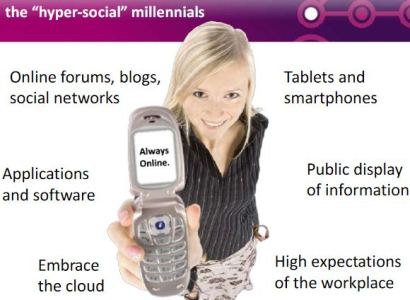If our recent innovation survey made anything abundantly clear, it was that having a well-established and formal process for encouraging innovation is essential for driving improvement at all levels. In fact, the research found the more innovative the organization, the more analysis, planning, process and structure were emphasized.
But among U.S organizations, only 28% said innovation is either widely practiced and encouraged, or established and formalized in their organizations. For the rest, 31% reported innovation as minimal or nonexistent, and 41% said their organization had only pockets of innovation. This means most people in the U.S. work in companies that could use a jump-start on innovation.
While it may seem daunting, there are things you can do now to make your organization more innovative. First, you have to recognize that you are not going to change all things overnight. But you do need to get started innovating, and you need to start now.
The good news: There is one simple thing you can do today to ignite your company’s innovation engine. The better news: It costs almost nothing to put into play. The idea: Start holding regular roundtables between the Millennials in your company and your company’s leaders and executives.
I first learned of this idea from the CIO of a global bank, who used it to kick-start a successful innovation imperative in his own company. He tapped several of the smartest on his team, and he scheduled regular roundtable meetings with them and his business peers. They talked about what was happening in the business as well as the latest tech happenings such as the cloud, mobile, big data, devops, the Internet of things and more. No topic was off limits. And everyone was encouraged to raise topics.
This CIO convened the meetings once per month. At each meeting, new business leaders were rolled in to keep things mixed up and to give the roundtables the broadest possible take on the business.
The result was seismic. The pace of innovation at the bank accelerated greatly. The number of new opportunities for capitalizing on emerging technologies to improve the organization’s service levels, competitiveness and bottom line multiplied.
Many of these ideas that came up in these meetings weren’t moon shots, but rather, simple things that were more obvious to the Millennials, who also understood how they could be implemented with agility. Some of the ideas wouldn’t work. Most importantly, all of the ideas were almost totally off the radar to the rest of the team. Once the business leaders bought into an idea, the senior members of the IT team worked with the Millennials to ensure the ideas were soundly implemented. As part of this, the bank is using these millennium-powered roundtables to mature a formal innovation process.
Certainly roundtables with your organization’s business leaders aren’t anything new. But insisting — indeed, driving them — with Millennials certainly is. Born after 1980, Millennials came of age in a world being transformed by the Internet, the Web, mobile networks, the cloud, smartphones, social media, apps and an “always connected” mentality. Millennials don’t remember a time before the Internet. They have a primal understanding of contemporary technology that is simply not part of previous generations’ DNA.
Equally important, they don’t know what they don’t know, what’s off limits or what they’re not allowed to do. These young IT pros are full of vision, vim and vigor. Putting them in the spotlight at an executive level can unleash a fountain of innovative ideas. While many ideas will be left on the cutting room floor, an honest, open and receptive dialog with your organization’s Millennials will certainly lead to a few ideas that work spectacularly well.
A side benefit of this one simple thing is that it can also help you start grooming tomorrow’s leaders.
It’s the definition of thinking outside the box — the box in which many of us who’ve been in IT for 20 or 30 years get stuck. Well-established global organizations often evolve a set of rules around what can and can’t be done. History ends up repeating itself. Getting your team’s Millennials involved in the discussions will break the inertia and shake things up for sure.
This post was originally posted on CA.com’s Innovation Today blog
